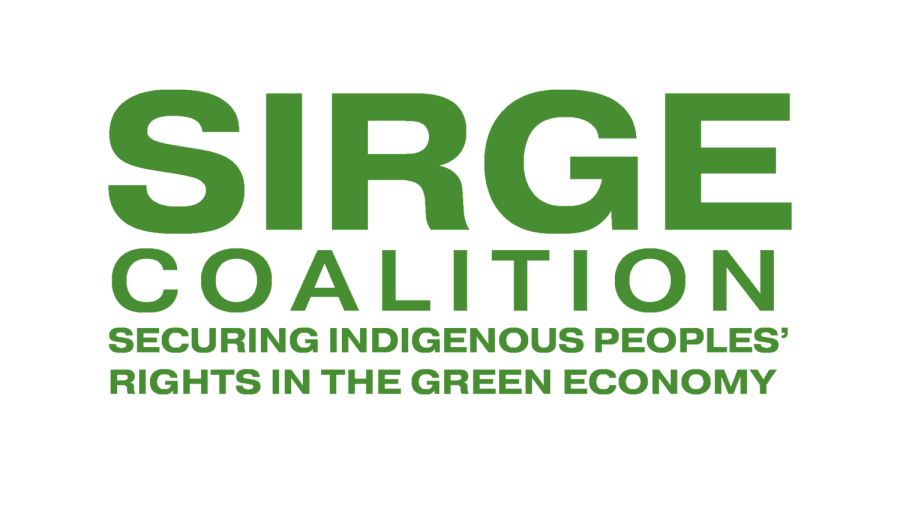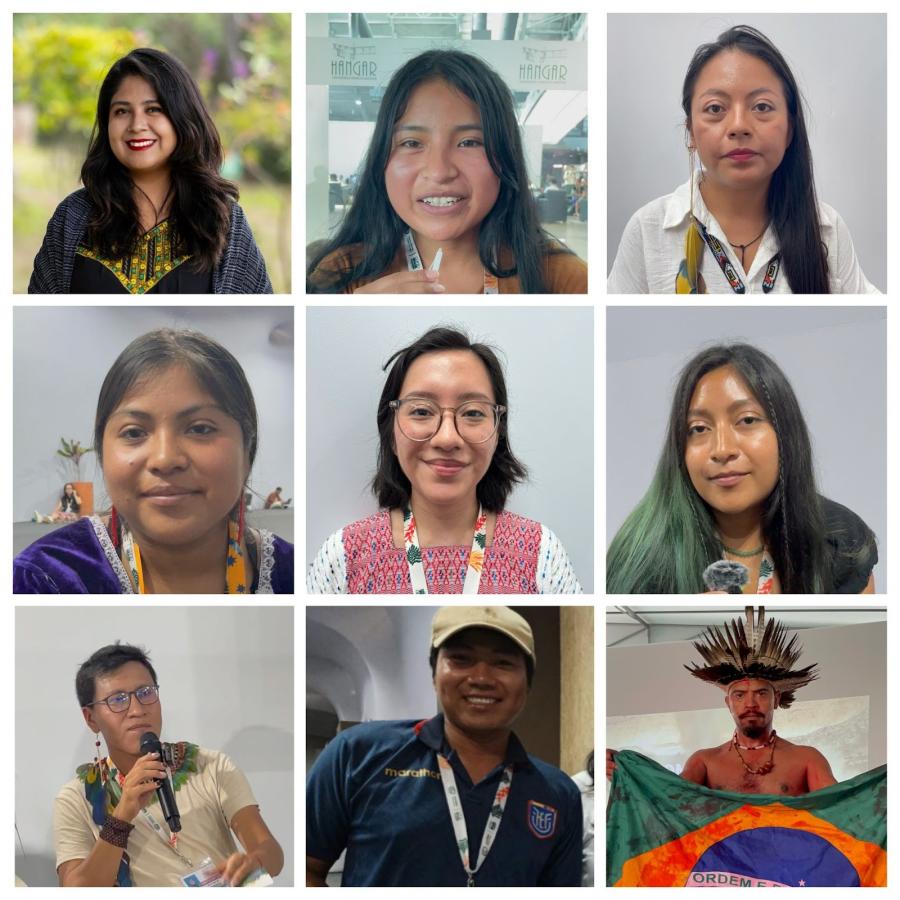
“Coming to the UN was a major achievement for the Mbororo Youths. It is a venue where we can raise our voices and be listened to without any prejudice.”-- Hassoumi Abdoulaye (Mbororo) from Cameroon
The United Nations Declaration on the Rights of Indigenous Peoples just got kid-friendly. On May 22, Indigenous youth from around the world filled the UNICEF House in New York for the launch of the new, adolescent-friendly version of the Declaration. The event, which took place during the twelfth session of the UN Permanent Forum on Indigenous Issues, was jointly organized by UNICEF, the secretariat of the Permanent Forum, Global Indigenous Youth Caucus, Plan International, and FIMI (Foro Internacional de Mujeres Indigenas/International Indigenous Women’s Forum). It made clear that Indigenous youth are the future leaders and have a great stake in implementing the Declaration.
While the empowerment and participation of Indigenous youth have been of great importance in Indigenous rights discourse for many years, the new version of the declaration is visually accessible and uses language that younger people can understand. Caucus member Hassoumi Abdoulaye (Mbororo) from Cameroon underscored the importance of the new document. “Implementing the Declaration needs the total [involvement] of youths. Their role can be the best way to reach major stakeholders for the Declaration’s implementation, such as the government, the Indigenous local communities, and the national and international partners. Youth ensure a role of linkage between stakeholders and the Indigenous community. They are seen as defenders of the violations of the Declaration thanks to their sharp critical analysis,” he said.
Raison D’être
“We are premised on inclusiveness, communal decision making, and respect of all peoples,” said Jocelyn Hung Chien from Taiwan. Hung Chien is co-chair of the Global Indigenous Youth Caucus, which is comprised of numerous Indigenous youth from various socioeconomic and cultural backgrounds. The Permanent Forum is an important occasion for members to voice their concerns and collaborate on issues concerning Indigenous youth. Young Indigenous participants have gathered together since the first Permanent Forum, but the youth caucus wasn’t formally inaugurated until 2006. Since then, it has convened daily during the annual sessions of the Forum to discuss the various issues and concerns of Indigenous youth worldwide.
Caucus members also attend other international meetings, like the Expert Mechanism on the Rights of Indigenous Peoples in Geneva, Switzerland. These discussions have led to the collective development and presentation of several statements to the Forum. In 2008, the Forum secretariat recognized the the group as a working caucus. However, the continued recruitment, involvement, and training of youth from various Indigenous communities worldwide is critical for the Forum to continue to function in a proper and sustainable manner for generations to come.
The full and effective participation of Indigenous youth at international meetings will provide proper representation of the different stakeholders and will strengthen cultural exchange of Indigenous youth in the world, which will eventually be reflected in legislation and public policy, making effective and responsible citizenship a reality. “We are a group of Indigenous Youth from across the globe gathering to discuss issues, draft statements and recommendations submitted to the UN Permanent Forum on Indigenous Issues. This space allows us to create a unified voice and keep discussions moving forward throughout the years,” says Hung Chien.
To prepare for the Forum, the youth caucus drafts collective statements to be endorsed and discussed by other youth from around the world. When youth members address the Forum, other members of the caucus stand directly behind the speaker in solidarity. “It is hard not to notice that during the forum, when the Indigenous Youth Caucus speaks, our members will stand behind us in full solidarity and support,” says Hung Chien. Members are encouraged to develop several statements for the Forum based on their own communities. There are two co-chairs of the caucus, selected as volunteers, who coordinate with others caucuses to gather and pass on information.
Abdoulaye explains, “The work of the youth caucus is mainly based on raising awareness campaigns, capacity building programs, lobbying, and networking with national and international partners. This work covers human rights advocacy, environment, climate change issues, cultural events, organizational, and institutional strengthening.” Speaking about his own community, Abdoulaye says, “Mbororo youths are getting more and better educated. It appears clearly that they are the future of Mbororo leaders. [Their] actions signify them as role models as they tackle challenges. Compared to their elders and parents, they are acquiring important tools in terms of capacity building programs, analytical skills, and are mastering the new information and communication technologies.”
Dalí Ángel (Zapotec) from Mexico added, “For us it is important to participate in these spaces and encourage other young people to participate. Now it is necessary that we make visible in these spaces our realities, problems, and necessities that we have as Indigenous youth and that we start from the experiential. We must be able to influence these spaces in order to provide our recommendations to resolve our issues; recommendations arising from a collective organizational process starting at the local level.”
Participation in the Caucus requires commitment and responsibility; the experience of Julius Ceasar M. Daguitan, (Igorot) from the Philippines, illustrates this. He explained, “In April, our organization, Asia Pacific Indigenous Youth Network, hosted Weaving Perspectives: Converging the Indigenous Youth’s Initiative in advancing Indigenous Peoples’ Rights, the Asia Pacific Preparatory meeting for the World Conference on Indigenous Peoples. In that conference we came up with a very good declaration regarding the World Conference on Indigenous Peoples and other concerns of the Indigenous youth. From the meeting our organization decided to let me attend the UN Permanent Forum on Indigenous Issues to share the results of the conference and also for me to observe and learn from international mechanisms.”
Hopes for the future of our work
After the Permanent Forum concludes, the work continues. Ideas are brought back to communities to be initiated and further discussed. Said Abdoulaye: “Our vision is to connect the Indigenous youth across the borders and continents, to share our views and experiences, to contribute in the struggle of our rights and to build up our capacity to shoulder the responsibility of carrying on our cultural heritage and advocacy for equality and justice.” He continued, “The strengths of the Indigenous youth caucus are their capacity to be objective, the clear conscience, motivations, and aspirations they are sharing with common values and traditions,” but pointed out that the lack of financial support and opacity of governmental policies regarding the concerns of Indigenous remain formidable obstacles.
“As Indigenous youth, [our] hopes are enormous,” Abdoulaye says. “The adoption of the Declaration and the involvement of Indigenous youth on the global level are the key tools to involve more Indigenous [youth] in relevant issues that affect [our] communities. On the national level, the celebration of the National Indigenous Day, since 2008, is an occasion where Indigenous youth are celebrating and discussing with the government and international organizations the situation of Indigenous Peoples in Cameroon. The creation of the National Civic Service and the Youth National Commission in Cameroon also permits the implication of Indigenous youth in the public mechanism. Finally, the growing number of Indigenous students is a key note of hope,” says Abdoulaye.



